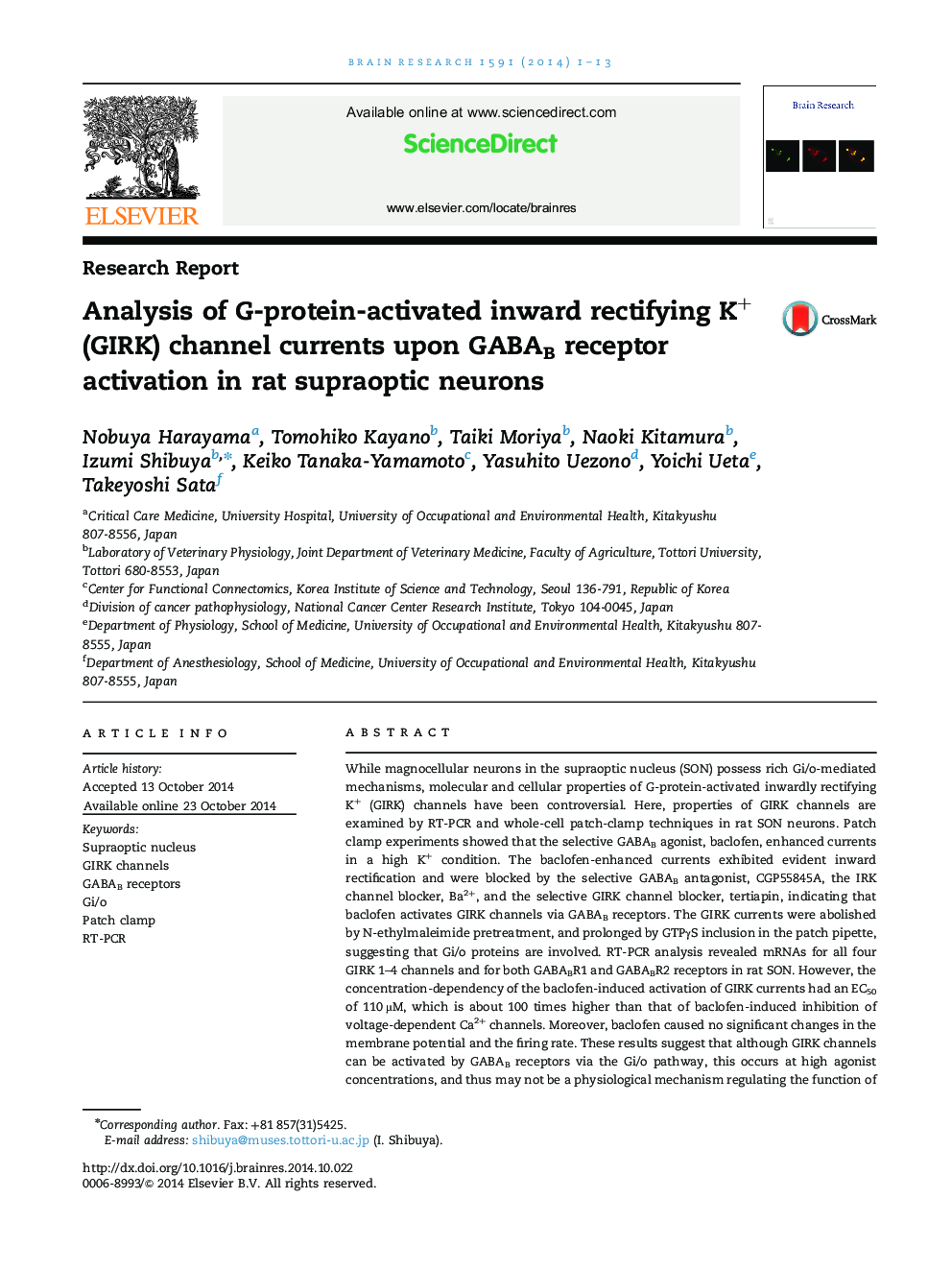| Article ID | Journal | Published Year | Pages | File Type |
|---|---|---|---|---|
| 6263218 | Brain Research | 2014 | 13 Pages |
â¢Baclofen enhances GIRK currents via GABAB receptors in rat SON neurons.â¢Gi/o proteins are involved in the activation of GIRK currents by baclofen.â¢mRNAs for GIRK1-4 and GABABR1&2 are detected in the rat SON.â¢EC50 for GIRK enhancement is about 100 times higher than that for VDC inhibition.â¢Rat SON neurons may receive little influence from GIRK channels.
While magnocellular neurons in the supraoptic nucleus (SON) possess rich Gi/o-mediated mechanisms, molecular and cellular properties of G-protein-activated inwardly rectifying K+ (GIRK) channels have been controversial. Here, properties of GIRK channels are examined by RT-PCR and whole-cell patch-clamp techniques in rat SON neurons. Patch clamp experiments showed that the selective GABAB agonist, baclofen, enhanced currents in a high K+ condition. The baclofen-enhanced currents exhibited evident inward rectification and were blocked by the selective GABAB antagonist, CGP55845A, the IRK channel blocker, Ba2+, and the selective GIRK channel blocker, tertiapin, indicating that baclofen activates GIRK channels via GABAB receptors. The GIRK currents were abolished by N-ethylmaleimide pretreatment, and prolonged by GTPγS inclusion in the patch pipette, suggesting that Gi/o proteins are involved. RT-PCR analysis revealed mRNAs for all four GIRK 1-4 channels and for both GABABR1 and GABABR2 receptors in rat SON. However, the concentration-dependency of the baclofen-induced activation of GIRK currents had an EC50 of 110 µM, which is about 100 times higher than that of baclofen-induced inhibition of voltage-dependent Ca2+ channels. Moreover, baclofen caused no significant changes in the membrane potential and the firing rate. These results suggest that although GIRK channels can be activated by GABAB receptors via the Gi/o pathway, this occurs at high agonist concentrations, and thus may not be a physiological mechanism regulating the function of SON neurons. This property that the membrane potential receives little influence from GIRK currents seems to be uncommon for CNS neurons possessing rich Gi/o-coupled receptors, and could be a special feature of rat SON neurons.
